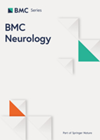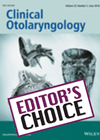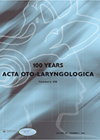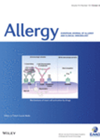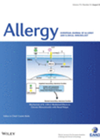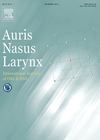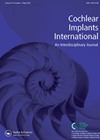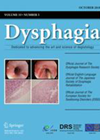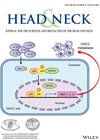
Journal Reviews archive for 2018
Head and neck radiation and the brain
An increasing number of patients with head and neck squamous cell carcinoma and other lesions are treated with high dose radiotherapy. An increase in survival rates is being reported along with a younger patient demographic. The long-term effects of treatment...
Globus – benign when the sole symptom
This is a prospective cohort study of Danish patients that presented to an otolaryngologist’s office with globus over the course of a year. They accounted for 4% of new patients, amounting to 122 patients in this study (57 patients were...
Does surgery work for acquired stenosis of the ear canal in the long term?
The surgical treatment of acquired post-inflammatory atresia of the external auditory canal (EAC), namely meatoplasty, is challenging with variable long-term outcome. This study looked at the clinical, audiological data, long-term outcome and patient satisfaction after performing meatoplasty. Sixteen patients were...
Chronic rhinosinusitis, are we treating the same disease?
Chronic rhinosinusitis (CRS) is a heterogenic disease. The effects of heterogeneity on treatment outcome are not very clear. Authors used clinical features such as endoscopic findings scores and full blood count findings in addition to analysis of 35 molecular markers....
Interleukins, cilia and polyps
Interleukins (ILs) including IL13 (Th2 cytokine) are inflammatory mediators and their role in asthma has been detailed before. This study explores IL13 receptor expression in chronic rhinosinusitis with nasal polyps (CRSwNP). The authors investigate protein and mRNA expression levels of...
Tinnitus in children
This is a review article about the management of tinnitus in children. In the end the authors came up with just three papers that made the grade. Maybe the most interesting finding was from Vianni in the JLO in 1989....
DIY Epley manoeuvre
This is an interesting paper that looks at getting patients to do their own particle repositioning manoeuvre (PRM) after having it done by a clinician (‘Epley’ to you and me although there are some slight differences) once a week for...
eSRTs versus eCAP: Which is better?
Electrically evoked compound action potentials (eCAP) and electrically evoked stapedius reflex threshold (eSRT) techniques were compared to establish how well the two techniques correlated and which yielded quicker results in a group of paediatric cochlear implant (CI) users. This team...
Sound localisation after bilateral cochlear implantation
Limited information is known about the localisation skills of paediatric cochlear implant patients who were good hearing aid users before their hearing deteriorated. As localisation is a skill often associated with good natural hearing, there is a worry that implants...
Who finds it hard to swallow?
Early identification of dysphagia in inpatients on acute stroke wards has been recommended as best practice guidelines in many countries. However, several institutions fail to use formal dysphagia screening protocols and rely on informal detection by nurses and doctors. This...
Investigation of the role of KPNA2 biomarker in oral SCC invasiveness
This edition of Head and Neck has a strong focus on studies using immunohistochemistry (IHC) to elucidate potential roles of various cell-signalling molecules in both HNSCC and thyroid cancer. The ‘cellular-protein heavy’ title of this article may be off-putting to...
Using evidence and international consensus to guide treatment of thyroid nodules
The authors of this practical review paper highlight a growing issue within thyroid surgery, where high-quality ultrasound has increased the detection of subclinical nodules: what do we do with the patient presenting with an ‘incidental’ thyroid nodule? This has both...

